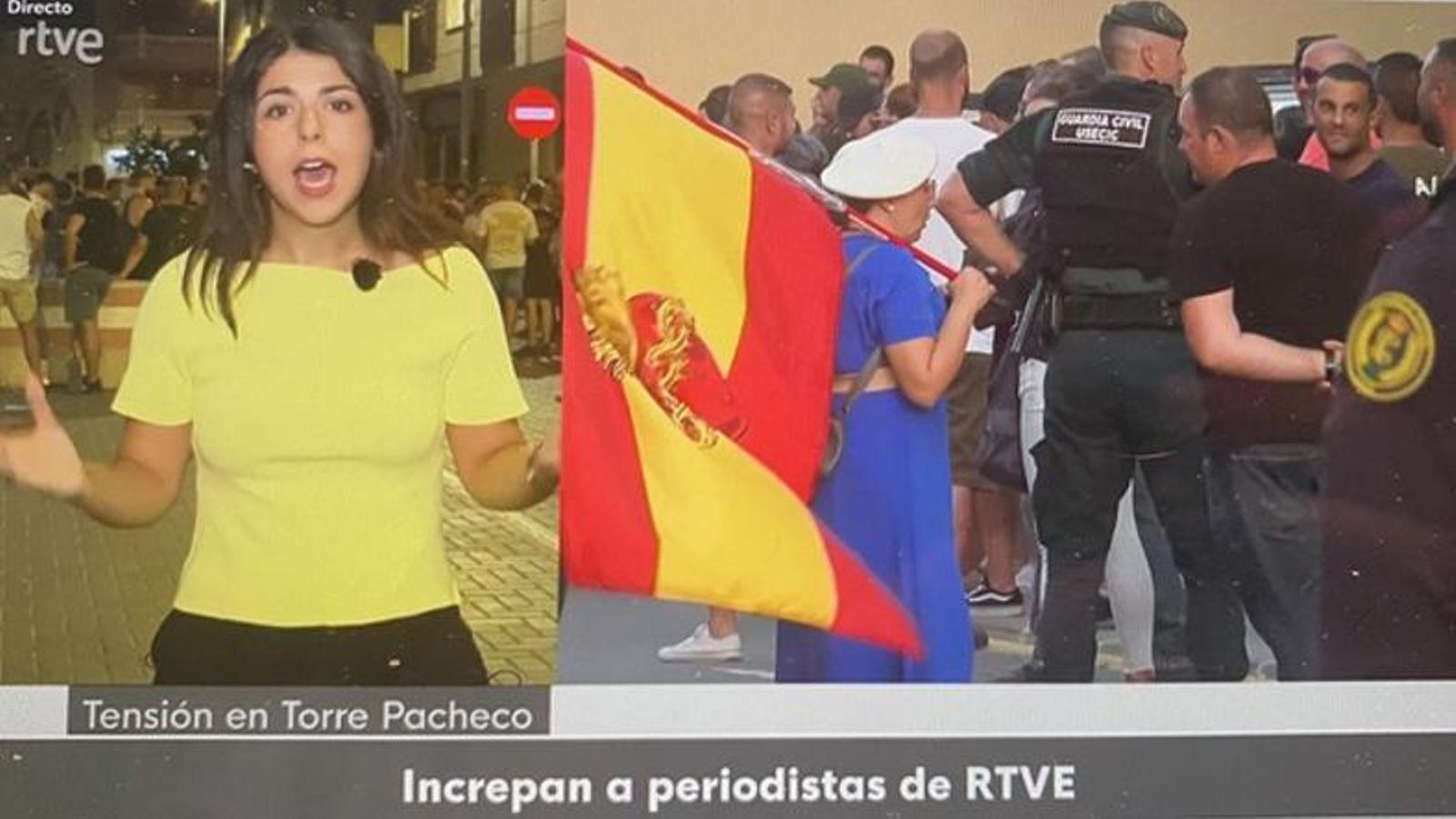Why are journalists being harassed in Torre Pacheco?


The escalating violence against local immigrants in Torre Pacheco has found another way to manifest itself: on television. Far-right groups and their sympathizers have escalated their aggression by attacking journalists covering the events. On Tuesday night, La 1 broadcast a special, Hate in Torre Pacheco, hosted by Marc Sala and Ana Roldán. A very interesting, though somewhat repetitive, program with experts, focused more on delving into the origins of these types of conflicts and the most pertinent way to address them from an informative, social, political, and economic perspective. They had four reporters on the ground, reporting from different vantage points. María Sánchez Chapinal was the journalist who connected from the start of one of the rallies. Around her, everyone, mostly men, could be seen in a kind of intimidating waiting state. Standing, wandering around the street, looking at their cell phones and observing from a distance how the reporter worked. Unlike her colleagues on the station, she didn't have a handheld microphone identifying the station, but rather a small microphone clipped to the collar of her sweater. She herself explained that, although it wasn't the optimal system, she had been forced to do it due to the intense tension surrounding her. During a subsequent connection, we viewers witnessed it. Her report was drowned out by shouts and insults. One of my recurring comments was bitch.
Many media professionals suffered harassment from the violent ones and the respective networks showed their images. Andrea Herrero de Bad tongues, Arancha Jiménez from RNE, Elena Gómez from To be late, Esther Yáñez dePublic mirror and so many others. Many of those we saw were women, because some of the thugs surrounding them and blocking their way were more daring to attack them. Machismo is another trait of the far right, and it was evident in the broadcast. The footage of these angry groups chasing the journalists, who had to leave their jobs and be protected, was an image they were keen to portray. It's not just about attacking press freedom and eroding public trust in the media. The scene of harassment and waiting for the live broadcast is a display of force that contributes to the spectacle and the prominence these extremists seek. While they besieged journalists, a whole group of cameras and cell phones were part of the scene to show it. It's logical that this be explained and shown to contextualize the tension, not to become the epicenter of the news. But we must keep in mind that this is yet another form of violence they use not only to silence, but also to globally impose the narrative of fear that serves their purpose in order to grow.
